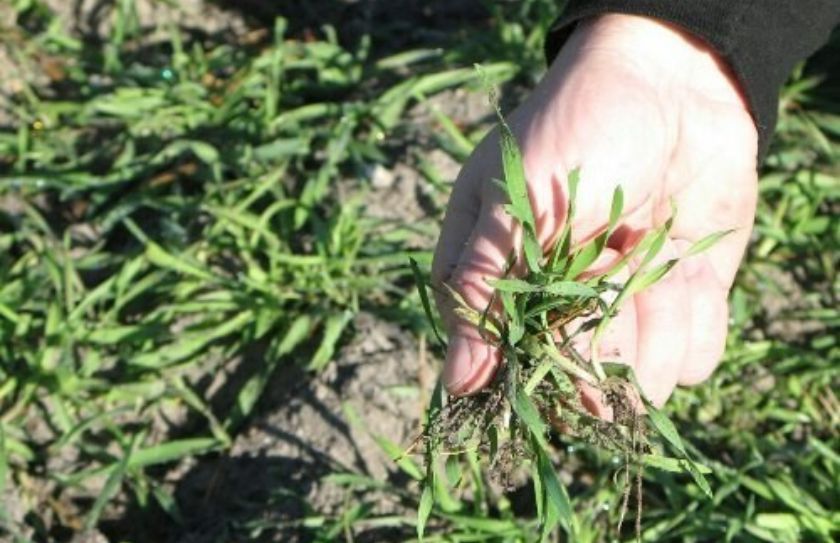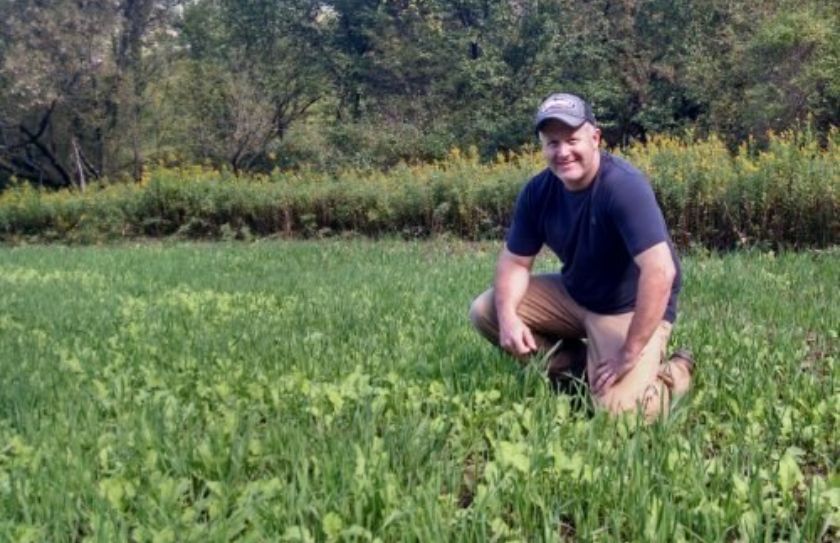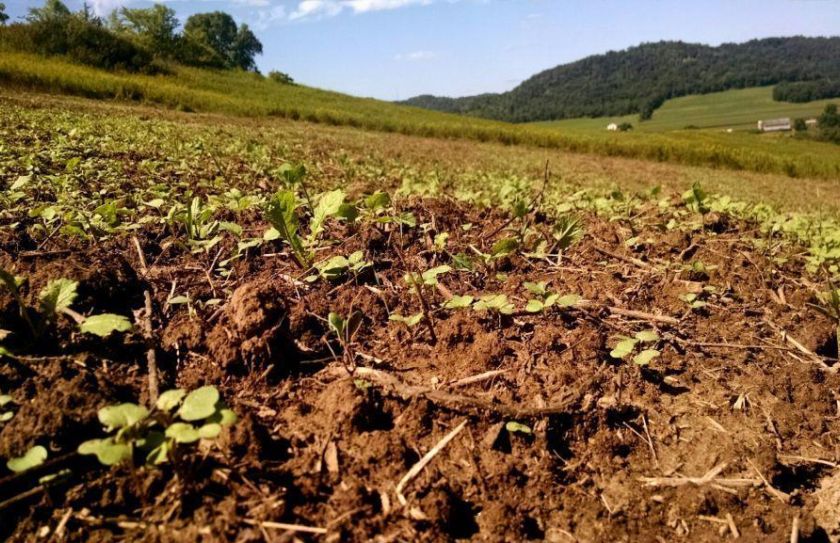"It looks like it is painted on the ground!", my lease partner described. Karl had just hunted the "Big Plot" and the surprise wasn't that he still saw several deer eating the forage, but instead that they were eating a crop of rye so short that it appeared to be painted onto a canvas of soil. It wasn't any surprise that as the season progressed into late October and then November, the deer sightings on that portion of the food plot began to decrease.
After successfully using the small grain of rye since the late 90s to fill the poor soil needs of my Upper Peninsula of MI property it seemed pretty natural to transfer that use and experience to our SW WI food plots. The only problem? Deer...and lots of them! The year was 2006 and the deer herd seemed to be expanding at a rapid pace. With light moisture and heavy deer numbers the rye experienced a tough time reaching a very appreciable height. In 2007 we completed a needed harvest of 12 does, but at the same time the heavy browsing dictated a necessary change in our planting methods regardless of how many deer were to eventually live on our parcel.
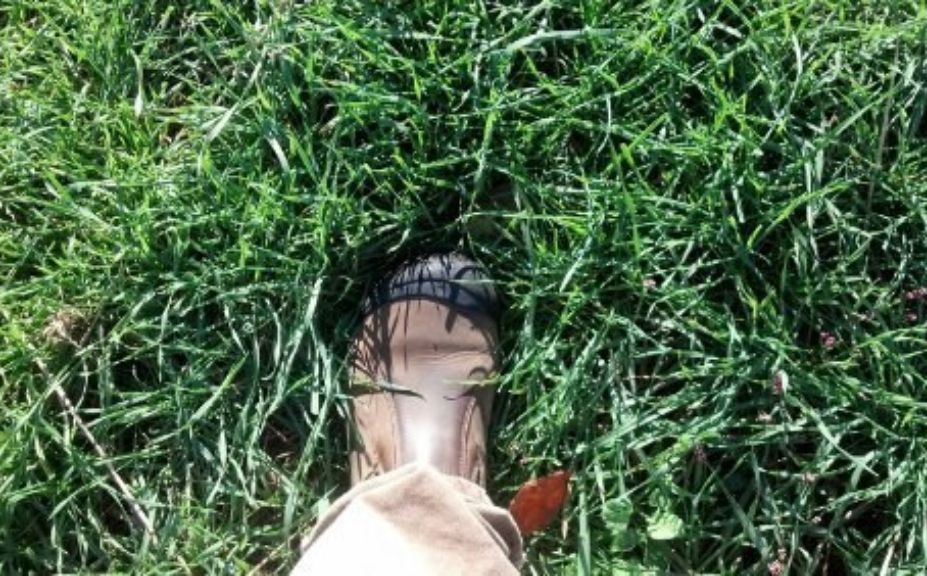
***Make sure to check out the cool pictures of this planting method in the, "Layered Food Plot Progression" article.
From 1999 I planted various percentages of rye and oats in an attempt to find that perfect balance of fall to Spring foraged supplied by the Winter rye, along with the more forgiving early season planting timing and quick attraction of oats. During the past 15 years of planting rye, I really don't think that their is a better forage available during the weeks between melting snows and Spring green-up. At the same time I have also enjoyed an attribute of oats that doesn't seem to be shared by rye by being able to plant oats a couple of weeks earlier during the late summer and still being able to find the deer foraging on the small grain even if it grows tall and close to maturity by late September. The two forages combine for more diversity than you may realize and I am excited to share with you how I have found a way to layer the two varieties to help you get the most out of your food plot space!
The "Top Layer" of Layered Food Plots
The practice of layering plots begins with oats and a twist. The twist comes in the form of a high-attraction forage that also can benefit from an early planting date: Austrian Winter Peas (AWP). AWP feature a candy-like draw and at the same time need to be covered with soil to germinate and grow successfully. Both oats and peas can be drilled, lightly disced and can even be established under the right conditions when broadcasted on exposed loose soil, dragged, and cultipacked prior to heavy rainfall. I like to focus on a planting date approximately 2 months prior to your first early Fall frost date which in my home location of SW WI is roughly August 15th.
Seed Amounts:
*The recommended amounts of seed is 50#s of oats, and 50-100#s of AWP. Try not to skimp on the peas, instead look to establish an appreciable representation of plants with a minimum of 50#s per acre, and more if your budget allows.
Goal:
*Young oats and peas is a very capable combo designed to not only offer a great sure-fire attraction, but more importantly to create a pattern of deer use weeks before the start of bow season. You can expect deer to hammer the plots as soon as the crop stands 2-3" high, and to not let up until the oats freeze-out and die in early December, and the peas are completely consumed. After successful establishment of your planting you have accomplished the most critical ingredient in the process: The top layer!
The 2nd Layer of Layered Food Plots
Within 2 weeks of germination the oats and peas will be under the considerable "attack" of whitetails. It is at this time that the 2nd layer of reinforcements will be a welcome investment for weeks to come. Deer feed from the top down, so while those hungry rippers focus on the succulent shoots of the first layer the 2nd layer will be creeping upward to soon offer steady resistance in the form of a several month layer of GREEN that will withstand all the frosts and freezes that the harshest Winter can produce. And the best part? All that you need to do to plant your 2nd layer is to simply broadcast rye over the top of your first layer with no discing, tilling, dragging or cultipacking needed. Each year I grow a small patch of rye in the bed of my pick-up after spilled seeds meets rain, dust and dirt; so trust me when I say that rye is easy to grow!
Seeding Rate:
*The recommended seed amount for your 2nd layer is 100#s per acre of rye, broadcasted 2 weeks after the initial layered food plot planting.
Goal:
*The 2nd layer creates the beginning of a heavy sod-base of food plot layers that will eventually form a mat of high value substance lasting into Spring green-up. Although the AWP will be eaten quickly and the oats will typically die and turn brown by Christmas, the rye will carry on the fight of green until the local habitat begins to awaken after a long Winter. After a quick influx of outstanding attraction and nutrition supplied by the oats and AWP, the rye will develop a strong base of adequate food that lasts in the whitetail woods for over 6 months. Because this concept is so critical for both your strategic hunting season food plot program and the long-term post Winter recovery for whitetails, you aren't finished yet!
The Final Layer of Layered Food Plots
After a full month of seeds first hitting the soil, the local whitetail population should be pounding your plantings! And depending on the overall numbers of deer in your area the deer may have started foraging on your food plot early and often. The month-old AWP should be growing strong and starting to be plucked at a high rate through the lush growth of oats, and after a quick rain the two week old rye will be young, tender and receiving attention to last until Spring. Bowhunting season is just around the corner, the possibility of frost is becoming more than just a hint, and there is one last task to insure that the food plot you have created will continue to be a high-value target for a full 6 months or more. It is at this time that the final ingredient to a layered food plot needs to be added!
Seeding Rate:
*The recommended seed amount for the final layer on your plot is another 100#s of rye, planted approximately 4-5 weeks following the initial oat and pea planting.
Goal:
It is no question that following the 1st and 2nd planting your plot will offer both an incredible draw to the local deer herd, as well as an increase in overall volume compared to traditional "one and done" plantings. A two stage planting will increase the efficiency of your food plot space, but at the same time I have experienced that there is more volume to be captured, as well as a higher level of attraction to find by adding the final layer of growth to the plot. Your last broadcasting is a "soil-filler", so when the rye seeds finally burst into tiny green shoots of 1-2", you should notice that the amount of exposed soil is slowly being replaced by a solid succulent mat of layered attraction.
Conclusion
There is no need to experience forages that appear to be painted on the ground, lacking volume, long-term use and ultimately attraction. I encourage you to experience the practice of layered food plots so that you can begin to maximize the efficiency of your food plot space. I agree that this planting method is not for everyone. Planting 3 times over course of 4-5 weeks takes more time, more effort, and more seed, however: Your hard work will be rewarded for many months to come, including the heart of deer season! Have you ever experienced plantings of small grains that seemed to lack the punch that both you and the local deer herd need on the lands that you hunt? The option of layered food plots may be just what you need to attain your ultimate level of whitetail success!
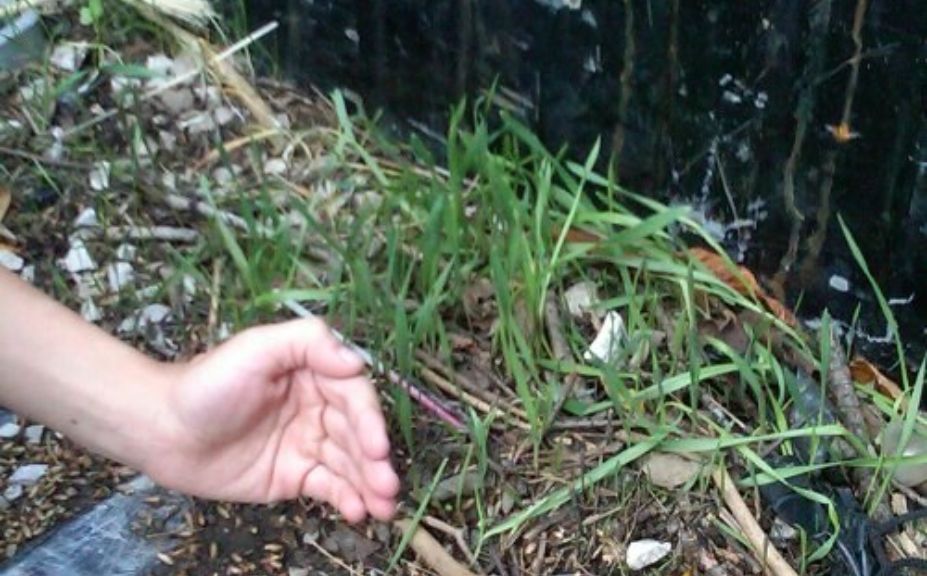
*How easy is rye to grow? This is a 2011 crop of rye growing in the bed of my pick-up!
